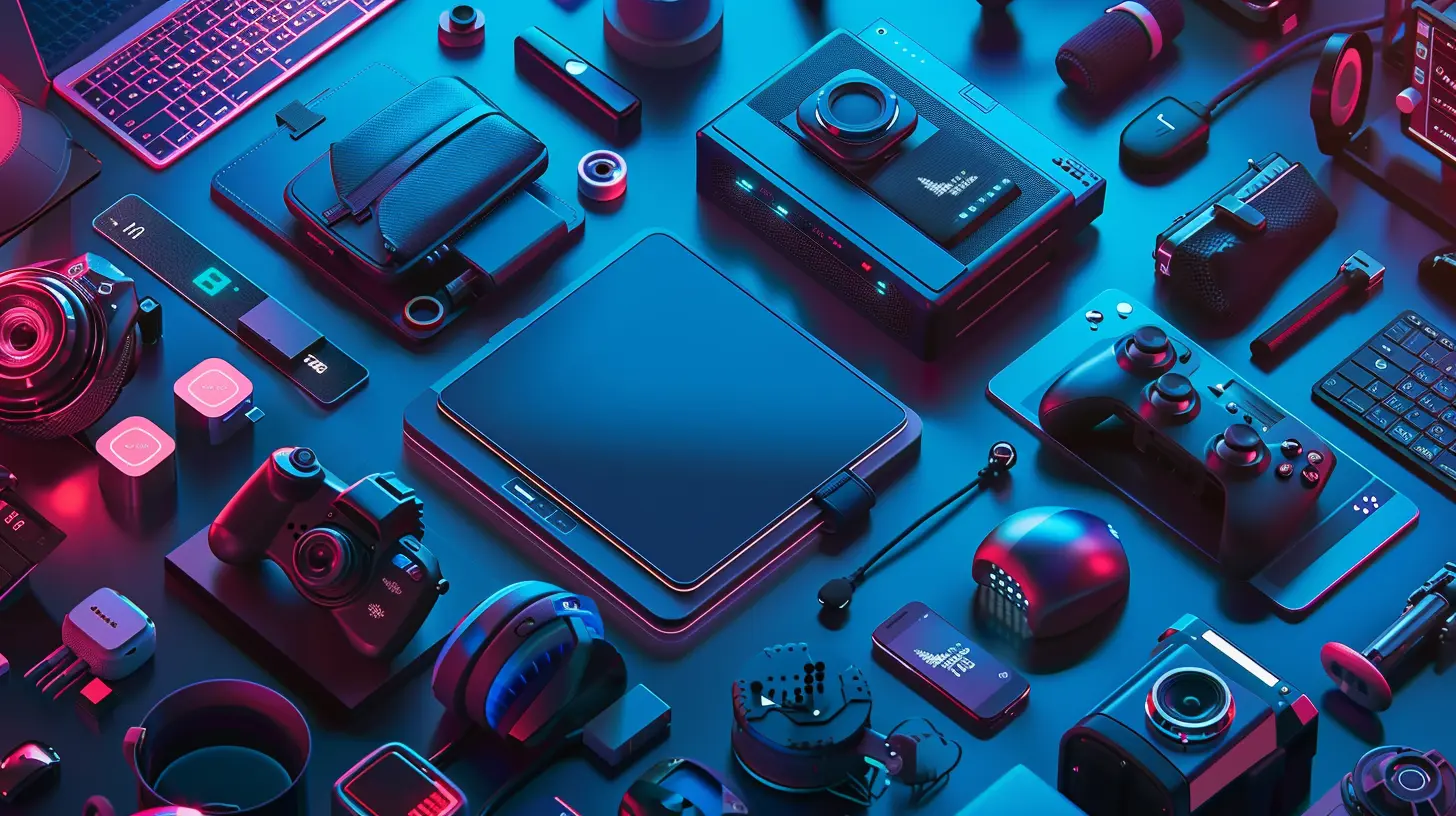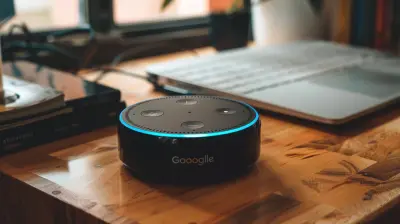How Streaming Devices Are Changing the Future of Live Events
22 November 2025
Live events used to be all about being there in person — the buzz of the crowd, the energy, the excitement. But let’s be real: not everyone has the time, money, or access to attend their favorite concerts, sports games, or events in person. That’s where streaming devices come flying onto the scene, flipping the script on how we experience live events.
From your living room couch with a bowl of popcorn to a road trip with a tablet in hand, streaming devices are making live events more immersive, more accessible, and straight-up more convenient. But how exactly are these little gadgets shaking up the multi-billion-dollar live event industry? Let’s dive in.
What Are Streaming Devices?
Let’s start simple. Streaming devices are gadgets that deliver content — whether it's video, audio, or even games — to your TV or screen over the internet. Think Amazon Fire TV Stick, Roku, Apple TV, Google Chromecast, and even smart TVs themselves. They’re tiny but mighty.They bypass cable and satellite services, enabling you to access countless platforms like Netflix, Hulu, YouTube TV, and more. But more recently, the spotlight has shifted to live content… and that's where things get interesting.
The Shift from Physical to Digital
Remember the time when you had to buy a ticket, wait in line, and try not to spill your drink while squeezing past people to get to your seat? Yeah, that’s still a thing… but it's no longer the only way to "attend" an event.Thanks to streaming devices, live events have gone digital. It's not just pay-per-view boxing anymore. We’re talking full-blown festivals, sports leagues, award shows, gaming tournaments, and even church services — all streamed in real-time, direct to viewers across the globe.
You don’t just watch it. You feel it. And with features like 4K, surround sound, multi-camera angles, and real-time chat, it's almost like being there (minus the overpriced snacks).
The Rise of Live Streaming Platforms
Let’s not forget the apps and platforms that integrate beautifully with these streaming devices. Twitch, YouTube Live, Facebook Live, TikTok Live, and even niche platforms like Dacast and Livestream offer ways to broadcast events to massive audiences in real-time.And when these platforms pair with streaming devices, you get a seamless, sit-back-and-relax kind of experience. No hunting for sketchy livestream links. No FOMO. Just fire it up on your Roku or Fire TV and you're good to go.
Why Streaming Devices Are a Game-changer for Live Events
Let’s get into the why. What makes these devices so influential in the live event scene?1. Accessibility for All
Not everyone can fly to New York for a Broadway show or hit up the Super Bowl. But now? A stable Wi-Fi connection and a streaming stick are all you need.Streaming devices bridge that gap. They’ve made attending events possible for people with physical disabilities, financial constraints, or geographical limitations. It's democratizing the live event experience.
2. Affordability
Here's some real talk: attending events in person is expensive. Tickets, travel, parking, food — it adds up fast. Streaming events via devices often costs a fraction of the price. Some are free, while others are included in subscriptions you already have.And for event organizers? Lower overhead. No arenas to rent, fewer staff, and more eyes from every corner of the planet. It’s a win-win.
3. Global Reach
With one livestream, your event is no longer limited to a physical venue. It's global. A music festival held in L.A. can now be watched in real time by someone in Tokyo, Berlin, or Cape Town.Streaming devices are the megaphone that broadcasts to the world — and that’s a big deal for artists, athletes, and creators looking to grow their audience.
4. Interactive Experiences
Gone are the days of passive watching. With features like live chats, polls, and shoutouts, viewers can directly engage with the event.Some platforms even enable interactive overlays — fans can vote on the next song, choose camera angles, or tip performers in real-time. This level of interaction transforms a regular stream into an engaging, unforgettable experience.
5. Data, Analytics, and Insights
On the business side of things, streaming events through connected devices offers a mountain of useful data. Organizers can track who's watching, where they're from, how long they stay tuned, and even what type of content keeps them hooked.It’s like having a backstage pass to audience behavior — and that helps creators improve and monetize their events better than ever.
Streaming and Sports: A Love Story in Progress
Let’s not sugarcoat it — sports broadcasters were late to the streaming party. But they’re catching up fast. Many major sports leagues now offer direct streaming subscriptions or have partnered with services to get their games on devices everywhere.The NBA, NFL, UFC, Formula 1 — you name it — now have their own apps, most of which are available on every major streaming device. Why? Because fans want flexibility.
Don't want to miss kickoff while you're grilling in the backyard? Sling TV on your Roku has your back. Want to rewind that brutal knockout punch? Just hit replay.
These experiences are turning streaming devices into the go-to way to catch sports live — and the trend’s only picking up speed.
Virtual Concerts and Music Festivals
When the pandemic hit, the music industry had to pivot fast. Enter virtual concerts.Artists started performing from their homes, empty venues, or even green-screen stages. Using streaming platforms and compatible devices, fans could watch from anywhere — and actually feel connected.
Even giants like Travis Scott and Ariana Grande did virtual concerts inside games like Fortnite. Yeah, not your average tour stop.
Now, companies are building hybrid models — combining physical shows with virtual access. That way, people who can’t attend in person can still enjoy the magic with a high-definition, front-row experience right from their couch.
The Gaming World is Always Ahead
Live gaming events? They’ve been leading the streaming revolution for years.Esports tournaments stream live, with millions of viewers tuning in to watch world-class competitors. Platforms like Twitch have gamified the watching experience too, encouraging donations, live reactions, and chat participation — all of which you can access easily via streaming devices.
This sector proves one big thing: if the content is good and the platform makes it easy, people will show up in droves — virtually, at least.
The Rise of Hybrid Events
Here’s something you’ve probably noticed — events are no longer all in-person or online. They’re both.Hybrid events blend the on-ground excitement with online access, giving audiences the best of both worlds. A conference might host a few thousand attendees in a hotel ballroom and stream to millions globally.
Thanks to streaming devices, watching a hybrid event doesn't feel like second-best. With high production value and real-time features, the experience is almost on par with being there. In some cases, it's even better — no long lines for the bathroom, am I right?
How Brands and Advertisers Are Cashing In
Streaming live events isn’t just a trend — it’s a goldmine.Brands, sponsors, and advertisers love these platforms because they get access to real-time engagement and targeted viewers. It’s more effective than a billboard and a lot more personal than a TV ad.
Want to promote your product during a live concert stream? Add interactive ads that let viewers click, comment, or shop without even leaving the stream. That’s powerful stuff.
Future Tech: What's Next?
OK, so what does the future hold?Let’s talk upgrades. We’re already seeing new streaming devices that support ultra-low latency, 8K resolutions, and integrated AR/VR capabilities. Imagine watching a live soccer match and being able to virtually walk the pitch using your VR headset. Sounds wild, but it’s not far off.
With the introduction of 5G, cloud streaming, and AI-enhanced personalization, the quality and delivery of livestreams are only going to get better. And the better the tech gets, the more people will ditch traditional attendance in favor of more convenient, immersive options.
Final Thoughts: The Revolution Is Just Beginning
The way we attend live events is evolving fast. Streaming devices are no longer optional — they’re central to how we experience content in this new world. They make live events more inclusive, more affordable, and honestly, more enjoyable for a lot of us.So whether you’re tuning into a concert, watching the big game, or attending a virtual comedy night, chances are your streaming device is doing the heavy lifting behind the scenes.
We’re not just watching. We’re participating. And the future of live events? It’s already here — and it’s living on your streaming stick.
all images in this post were generated using AI tools
Category:
Streaming DevicesAuthor:

Vincent Hubbard

